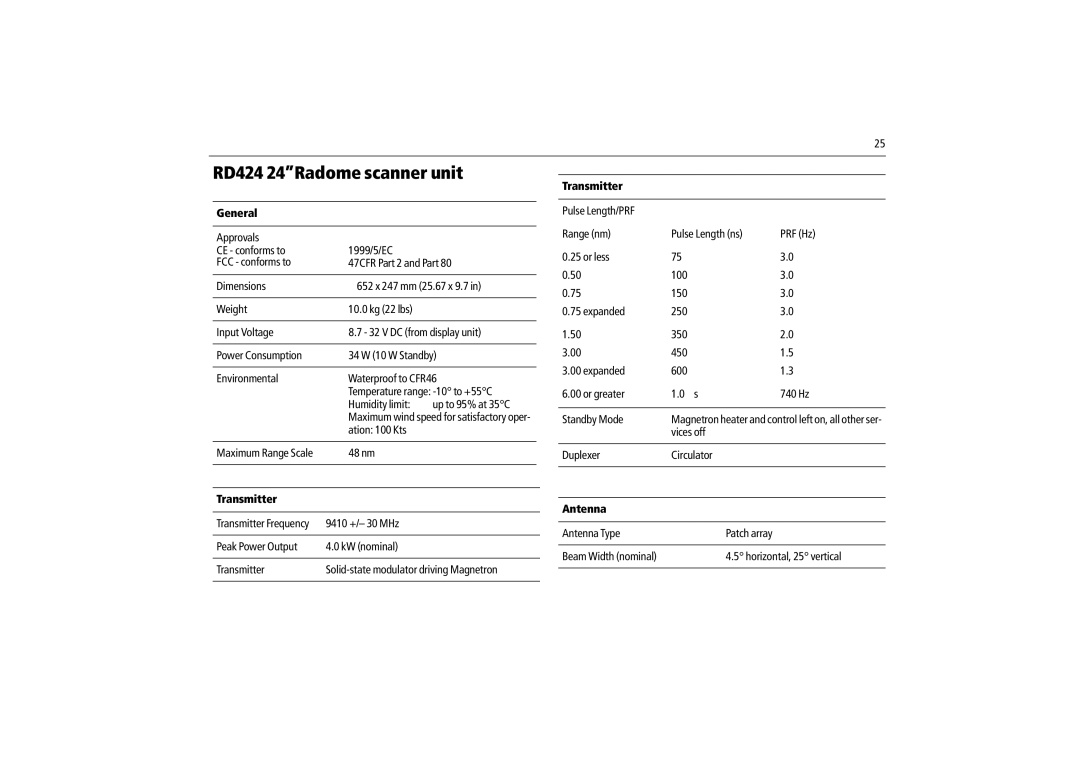Radome Scanners specifications
Raymarine Radome scanners are an essential component for maritime navigation, providing boaters and marine enthusiasts with reliable radar technology. These radar systems are known for their durability, efficiency, and advanced performance, making them a popular choice for both commercial and recreational vessels.One of the standout features of Raymarine Radome scanners is their compact and lightweight design. This makes them particularly suitable for smaller boats where space can be a concern. Despite their size, these scanners deliver impressive range and resolution, ensuring accurate detection of other vessels, landmasses, and weather phenomena.
The technology employed in Raymarine Radome scanners includes patented CHIRP Pulse Compression, which enhances target separation and improves the ability to distinguish between close and distant targets. This leads to clearer images and more reliable data, ensuring operators can make informed decisions while navigating.
Another significant characteristic of these radomes is the advanced signal processing capabilities they offer. The radar systems can filter out clutter, such as waves and rain, to provide clear representations of objects that matter, thus reducing false alarms and enhancing situational awareness. The integration of digital signal processing (DSP) allows for adaptive gain control, which optimizes performance under varying environmental conditions.
Raymarine Radome scanners are also designed to be user-friendly. The intuitive interface LCD displays or integration with multifunction displays allow for easy operation and access to critical navigation information. Users can customize their radar settings to suit their specific needs, which enhances usability and reduces the likelihood of operator error.
Many models also feature advanced maritime safety features such as MARPA (Mini Automatic Radar Plotting Aid), which tracks moving targets and provides information on their course and speed. This technology is vital for collision avoidance and ensures a safer boating experience.
In terms of compatibility, Raymarine Radome scanners seamlessly integrate with other Raymarine systems, creating a cohesive network of navigation tools. This compatibility allows users to layer radar data with charts and other navigational information, offering a holistic view of their surroundings.
In summary, Raymarine Radome scanners are characterized by their compact design, advanced technologies, and user-friendly interface. The combination of features such as CHIRP technology, digital signal processing, and safety enhancements make them a top choice for anyone looking for precision and reliability in maritime navigation. Whether for commercial use or recreational boating, these radar systems stand out for their performance and quality.

